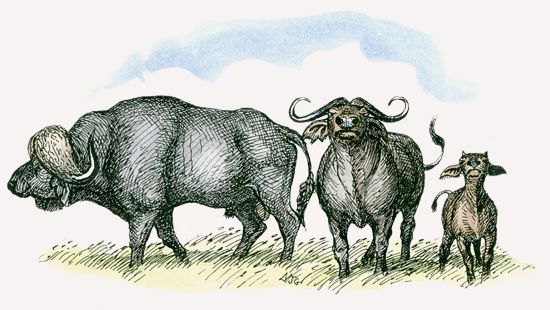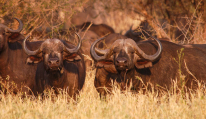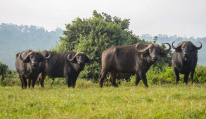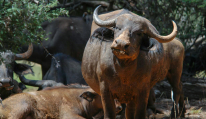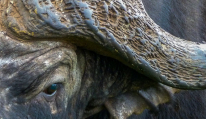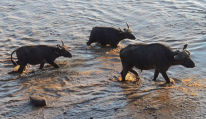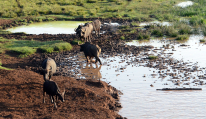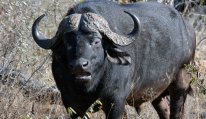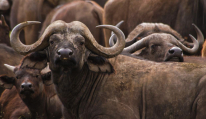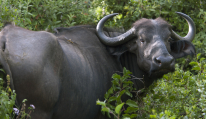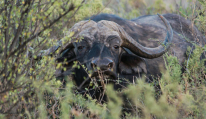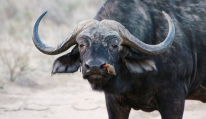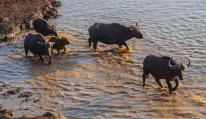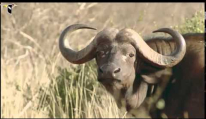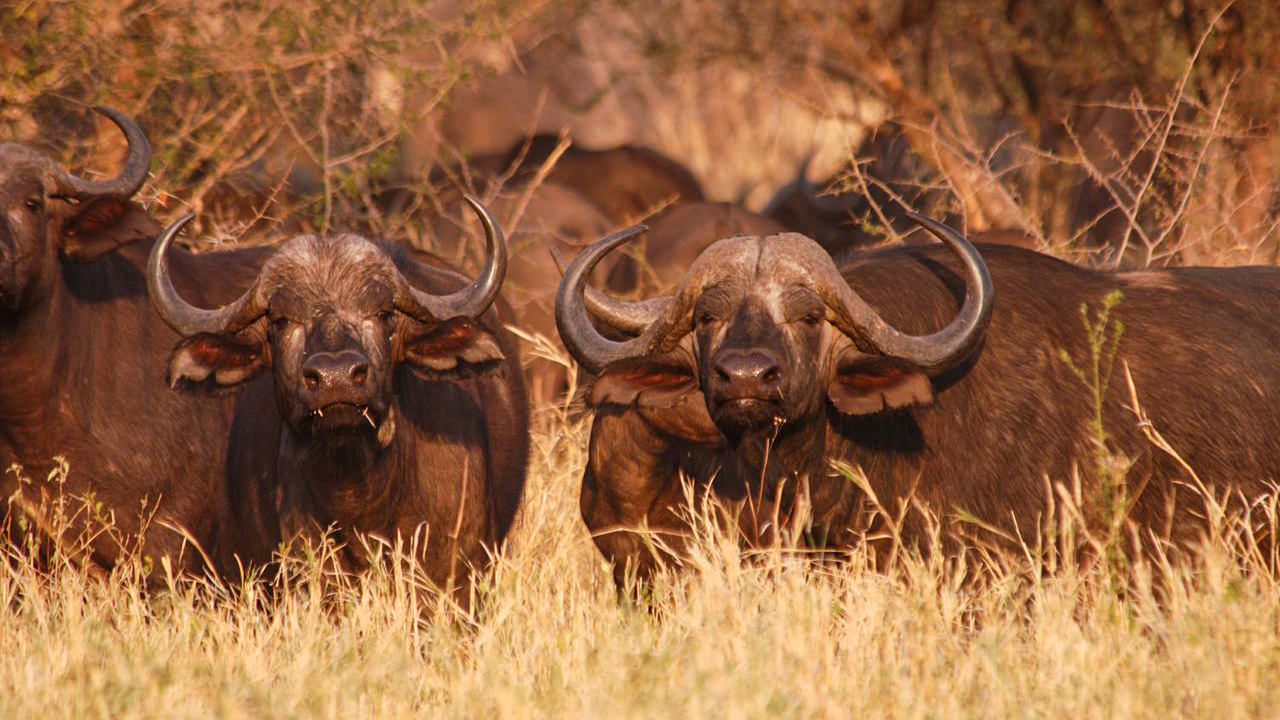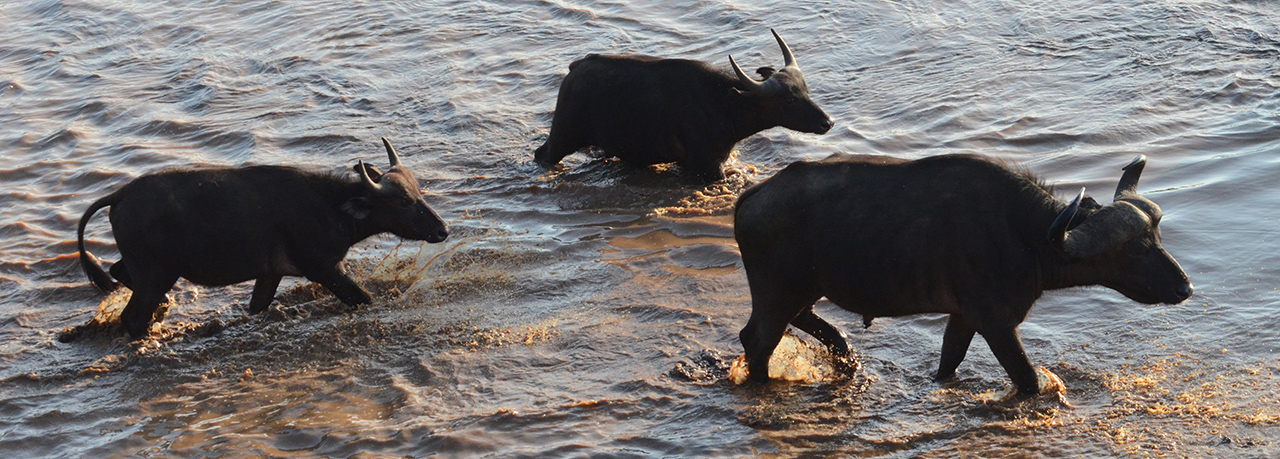Social Structure
Buffalo herds vary tremendously in size, from 20 to more than 1,000 animals. A single herd can last for over 50 years, spanning multiple generations. Large herds often split off for a time, and separate herds sometimes mingle together. Females remain in the herd where they were born, and their offspring stay there as well, often remaining with their mother well into adulthood. Adult bulls leave the herd to either join bull herds or to migrate between a solitary existence and the larger herd. Some males coordinate with other bulls about when to re-enter a herd. Within the herd, each buffalo occupies a set position—rear, middle, or front. Adult females determine where the herd will move by using a democratic system. Each female “casts her vote” by standing with her head facing the direction she wants the herd to take. The majority opinion determines the outcome. The group also has “lead animals,” adult males or females that walk in front and direct the others when to stop.
Communication
Buffalos communicate mostly through ritualized body movements and postures. To threaten another bull, a male buffalo stands with his head high and muzzle low. The submissive bull approaches with his head low, sets his muzzle between the back legs of the dominant bull, and emits a thundering bellow. Otherwise, buffalos are mostly quiet except for the occasional grunt or snort. At night, buffalos use a unique warning system to communicate danger: The herd falls completely silent, effectively concealing each individual in the dark.
Behavior
A buffalo’s day alternates between periods of grazing and ruminating, or digesting food already eaten. While some herds are quite sedentary, others walk long distances between grazing sessions—up to five miles (8 km) in 24 hours. Buffalos also enjoy wallowing in mud, probably to deter biting insects. Calves rarely play with one another, but adult bulls engage in sparring matches. Two competitors hook and butt each other with their horns. This may be a way to test dominance between bulls, particularly within the complicated male hierarchy of larger herds. However, both winner and loser appear to enjoy these duels. Actual fights are rare, and can result in the death of one or both animals.
Conservation
Habitat destruction (particularly from overgrazing by livestock) and disease pose the biggest threats to buffalo populations. Buffalos are extremely vulnerable to rinderpest, which can spread to them from cattle. Unfortunately, many farmers blame buffalos for the spread of this disease, and have pushed for the eradication of the species to protect their cattle. The construction of roads also threatens buffalo by fragmenting herds and increasing poachers’ ability to hunt. Because of their reputation as one of the most dangerous animals in Africa, buffalos are considered valuable trophies.

